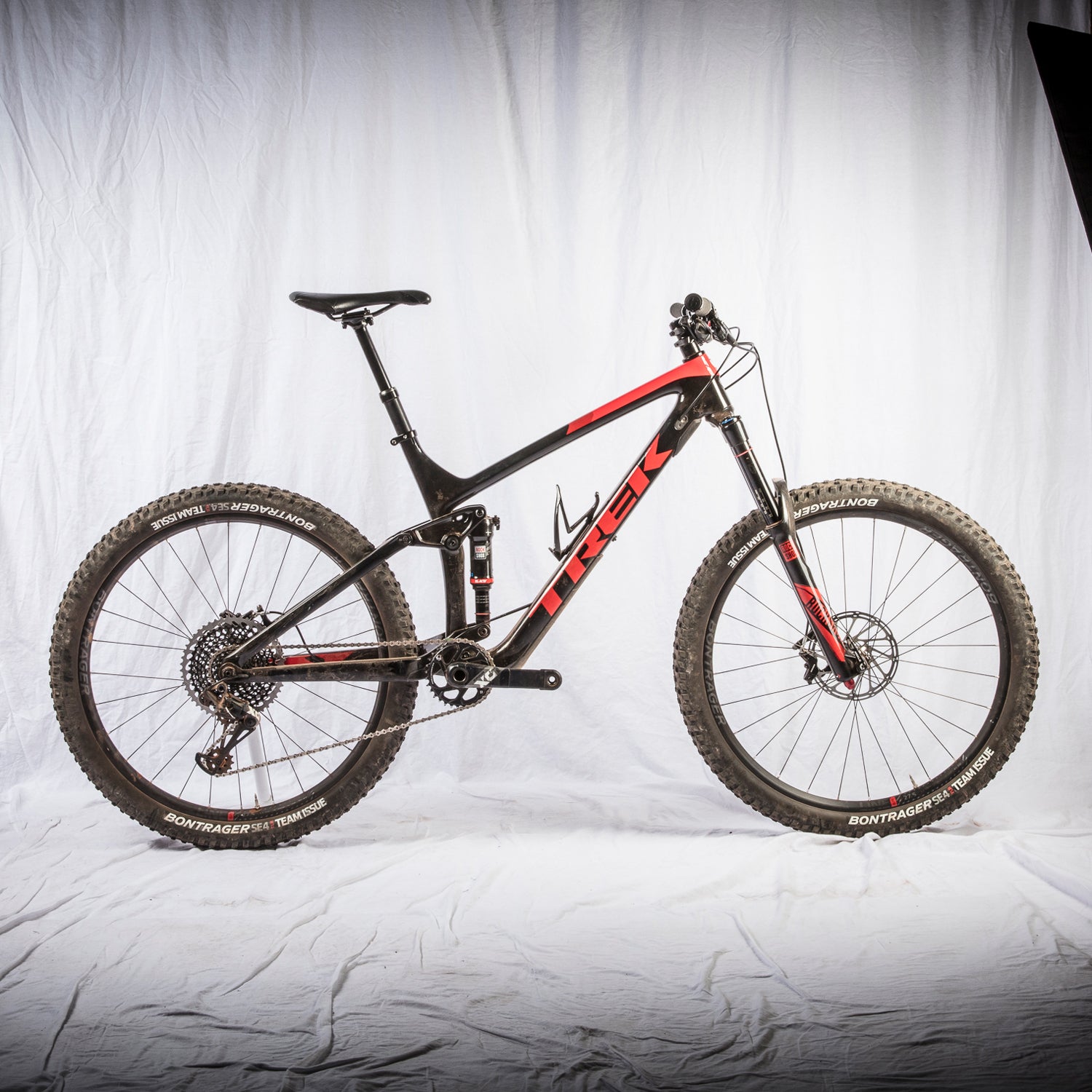29 was one of our favorite bikes last year, so we were worried when we heard Trek overhauled it for 2017. Our testers already felt that this year's longer, slacker Fuel EX was a step backward from the 2016 edition, and it didn鈥檛 bode well that Trek nixed the Remedy 29 option in favor of a full 27.5-wheel lineup. But the company reps were so bullish on the redesign that we felt we had to try it.
Turns out our anxiety was all for naught.
In its new formulation, the Remedy gets the smaller wheels and a little extra travel, jumping up to a healthy 150 millimeters in the rear. That's mated to 150mm up front on all models except the top-end 9.9 that we rode, which scores a meaty 160mm RockShox Lyrik fork for added confidence on descents. It also became more gravity oriented courtesy of the 65.5-degree head angle, which can get a half-degree slacker via the flip chip in the suspension. With a 35mm stem, the fork feels raked out and the bike ready to shred the descents. But Trek's custom tuning on its shocks makes for a bike that pedals incredibly well despite all that laid-back travel.
The other thing you immediately notice about the Remedy is the stick-straight junction between head tube and down tube. On past Remedy models (and most bikes), there's a bend and backward flare to allow the fork to clear the frame. Here, Trek has mitigated the contact issue with a steering limiter鈥攊n turn, the straight-line junction makes for a sturdier, stiffer front end that is also presumably lighter because it needs less reinforcement than the arch shape.
Stiffness is the bike's defining characteristic. Not in the jangle-you-to-bits sense, but in a confidence-inspiring, conquer-anything sort of way. We took lap after hot lap on some of the most playful trails in Sedona, Arizona, aboard this bike, and it slammed through bedded rock gardens, carved up wall rides, and landed six-foot drops to flats and never felt squeamish or squirrelly. This bike just wants to jump and hop and pop over and through anything you can find. And like last year's Fuel EX 29, this year's Remedy is both lighter than its big travel numbers suggest (27.6 pounds) and more capable. Truth be told, I'm more of a 29er guy than 27.5, so I didn鈥檛 want to like the new Remedy. But I must admit that if you live somewhere with lots of tech and tight trails, it would be an ideal weapon of choice.
In addition to building what is arguably the most capable fleet of mountain bikes in the business at the moment, Trek has done an excellent job plumping up and developing its Bontrager line of components. The expanding range of Line wheels are all excellent, and these Line Elite 30s felt snappy and fast. Despite not looking exceptionally knobby, the SE4 tires are nicely squared off for speed yet surprisingly grippy and confident. No slashed sidewalls or flats, either. And the new Drop Line dropper post is smooth, features a great ergonomic lever, and has yet to loosen up or fail us. (Though we would have preferred 150mm of travel on a bike as capable as this one.)
Trek continues to offer good value as well. At $8,000, our fully loaded is pricey but notably less expensive than most of its direct competitors, excluding Giant. And the real value comes at the lower price points, with a Shimano XT鈥揺quipped 9.8 going for $5,300, a SRAM X1鈥揵uilt 9 for $4,500, and two aluminum models down to $3,000.
Oh, and about that vanishing 29er model: Trek nixed the Remedy 29 but revived the venerable as a big-wheeled enduro sled. It's a pity to see the old Remedy 29 disappear, but the new Remedy is certainly emblematic of the industry trend toward bikes with more travel that ride as well as, if not better than, versions of the past.


